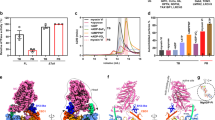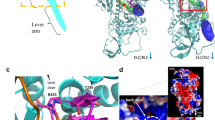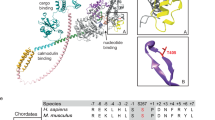Abstract
Riseman and Kirkwood1 recently suggested that the relaxation of muscle may be attributed to its stretching by the electrostatic repulsion of the ionized groups carried by the phosphorylated myosin molecules. During the contraction, the phosphate groups are split off, and the macromolecules coil up by Brownian movement.
This is a preview of subscription content, access via your institution
Access options
Subscribe to this journal
Receive 51 print issues and online access
$199.00 per year
only $3.90 per issue
Buy this article
- Purchase on SpringerLink
- Instant access to full article PDF
Prices may be subject to local taxes which are calculated during checkout
Similar content being viewed by others
References
Riseman, J., and Kirkwood, J. G., J. Amer. Chem. Soc., 70, 2820 (1948).
Kuhn, W., Exper., 5, 318 (1949).
Katchalsky, A., Exper., 5, 319 (1949).
Kuhn, W., Hargitay, B., Katchalsky, A., and Eisenberg, H., Nature, [165, 514 (1950)].
Ferrel, R. E., Olcott, H. S., and Fraenkel-Conrat, H., J. Amer. Chem. Soc., 70, 2101 (1948).
Sumner, J. B., and Somers, G. F., “Laboratory Experiments in Biological Chemistry” (Academic Press, New York, 1949).
Sumner, J. B., Science, 100, 413 (1944).
Author information
Authors and Affiliations
Rights and permissions
About this article
Cite this article
KATCHALSKY, A., EISENBERG, H. Polyvinylphosphate Contractile Systems. Nature 166, 267 (1950). https://doi.org/10.1038/166267a0
Issue date:
DOI: https://doi.org/10.1038/166267a0
This article is cited by
-
A comparative study of the contractile mechanism of unstriated muscle
Proceedings / Indian Academy of Sciences (1951)



